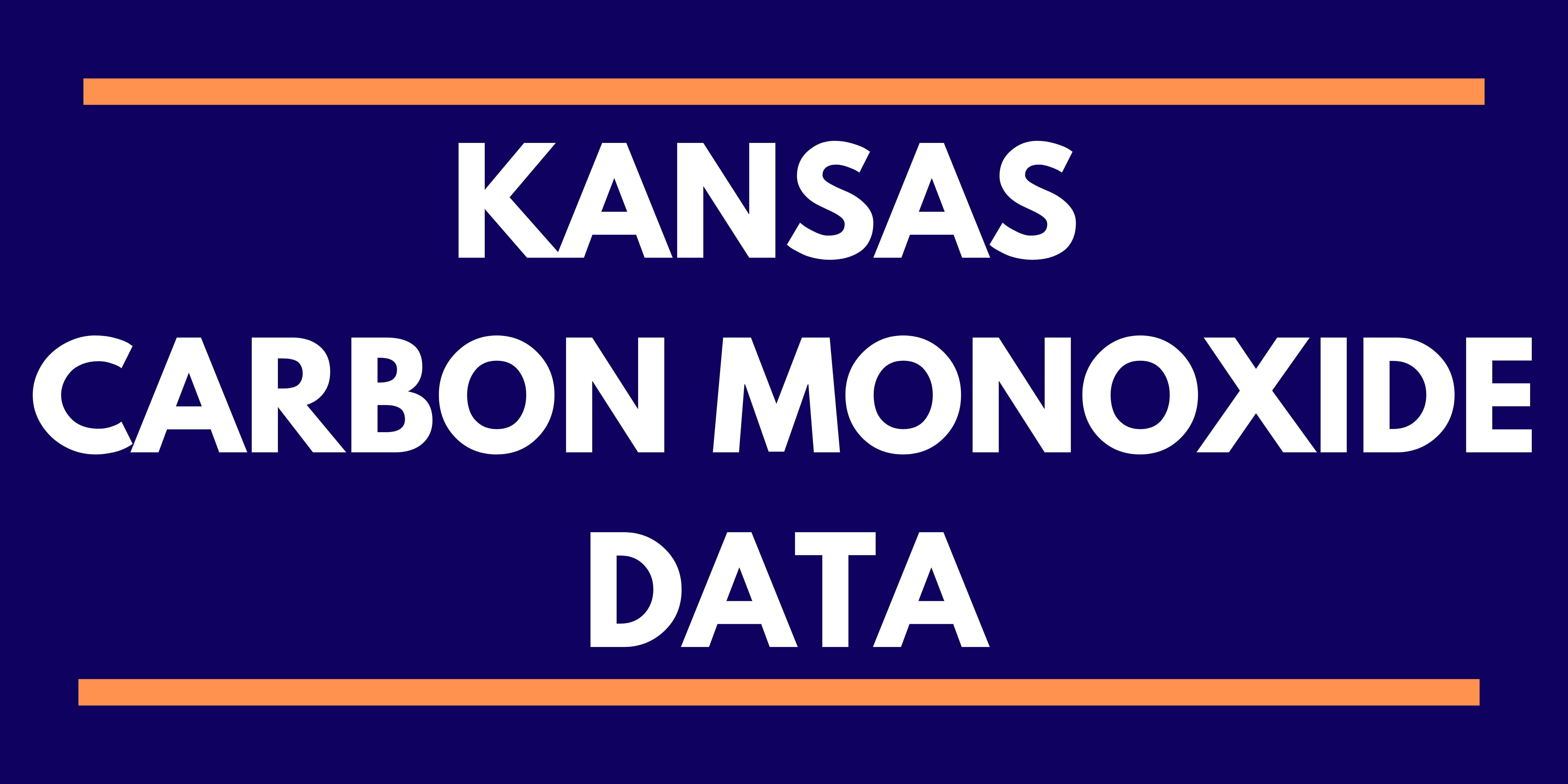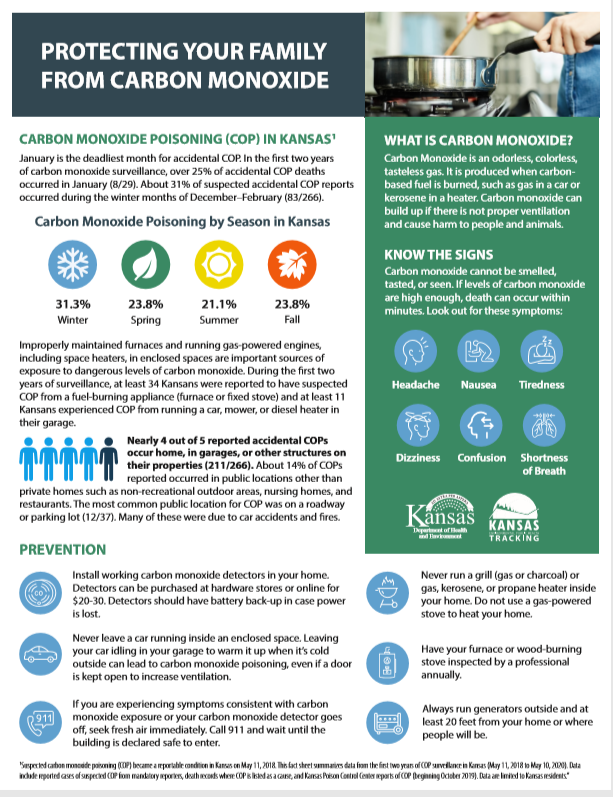Explore Kansas Carbon Monoxide Poisoning Data
To explore carbon monoxide poisoning data, click on the icon below:

Tracking Carbon Monoxide Poisoning
Carbon monoxide poisoning is a KDHE reportable condition in Kansas and the Tracking program is responsible for carbon monoxide poisoning surveillance. The Tracking program looks at the number of inpatient hospitalizations, emergency department visits, and deaths due to carbon monoxide poisoning. Carbon Monoxide poisoning data helps to inform the public about unintentional CO poisoning hospitalizations, ED visits, and deaths in Kansas. This data can also assist program and community-level planning and evaluation.
Carbon Monoxide Fact Sheet
Did you know that January is the deadliest month for accidental carbon monoxide poisoning for Kansans?
View and download the fact sheet by clicking on here.

What is Carbon Monoxide Poisoning?
Carbon monoxide, or CO, is a colorless and odorless gas. CO is found in combustion fumes, such as those made by cars and trucks, portable generators, stoves, gas ranges, and heating systems. CO from these fumes can build up in places that do not have enough ventilation of fresh air. Breathing high levels of CO can cause severe illness or death in a matter of minutes. In Kansas, most carbon monoxide exposures occur in the home. Each year nearly 20,000 people across the United States require emergency medical care for non-fatal carbon monoxide poisoning. Understanding if certain locations or populations of Kansans are more at risk for carbon monoxide poisoning is one of the reasons the Tracking program tracks carbon monoxide poisoning hospitalizations and emergency department visits.
Carbon Monoxide Poisoning and the Environment
Who is at risk?
Everyone is susceptible to carbon monoxide poisoning. However, men are four times more likely to be poisoned by CO due to risks taken when working in enclosed areas where internal combustion engines or improperly vented heating devices are operated.
Can carbon monoxide make me sick?
Breathing CO can cause headache, dizziness, and nausea. If CO levels are high enough, a person may become unconscious or die. Exposure to moderate and high levels of carbon monoxide over long periods of time has also been linked with increased risk of cardiovascular disease. Survivors of severe carbon monoxide poisoning may suffer long term neurological problems.
How can my risk be reduced?
Carbon monoxide poisoning is preventable. There are several things you can do to ensure you and your family are safe from carbon monoxide poisoning.
- Install a battery-powered CO detector (or electric-powered device with battery backup) in your home and near all sleeping areas. As with smoke detectors, replace the battery when changing the time on clocks each spring and fall. If the alarm sounds, leave your home immediately and call 9-1-1.
- Have your fuel-burning appliances, including oil and gas furnaces, gas water heaters, gas ranges and ovens, gas dryers, gas or kerosene space heaters, fireplaces, and wood stoves inspected by a trained professional at the beginning of every heating season. Make certain that the flues and chimneys are connected, in good condition, and not blocked.
- Choose appliances that vent their fumes to the outside whenever possible, have them properly installed, and maintain them according to manufacturers’ instructions.
- Read and follow all instructions that accompany any fuel-burning device. If you cannot avoid using an unvented gas or kerosene space heater, carefully follow the cautions that come with the device. Use the proper fuel and keep doors to the rest of the house open. Crack a window to ensure enough air for ventilation and proper fuel-burning.
Carbon Monoxide Infographic
Resources